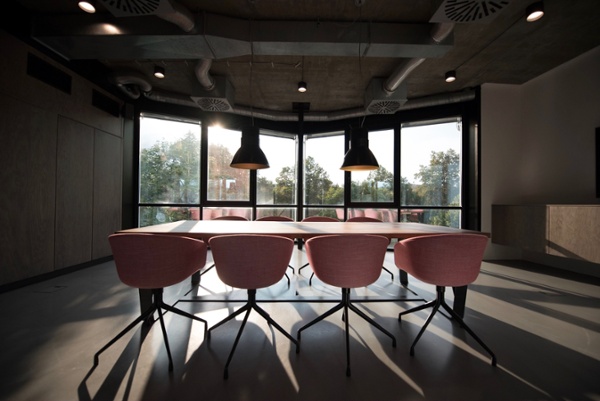Find out how to assess your workplace’s overall effectiveness
 Traditionally, companies may have estimated their office space’s value by the current rental cost per foot and how many employees the office could hold.
Traditionally, companies may have estimated their office space’s value by the current rental cost per foot and how many employees the office could hold.
Workspaces, though, have changed in recent years. Employees favor a different workplace design than in the past; their highest-ranked office element, Gensler research found, is that a space supports teambuilding and collaboration.
While numerous companies place workers in personal employee workstations within an open office floor plan layout, some have begun transitioning to a workspace that relies more on casual meeting areas than cubicles.
With workplaces no longer structured to maximize desk space and headcount, how can companies determine their office ROI?
Taking the following aspects into account may be helpful:
The average amount of time people spend in employee workstations or other areas
Data on how often workers are physically seated at a desk, in meetings or in other portions of the office can help employers adjust office space accordingly. You may find, for example, teams have more meetings than before, making any noise associated with an open office floor plan layout less of an issue — or that 45 employees, 75 percent of your 60-person staff, are starting their lunch break between 12 to 12:30 p.m., which is overcrowding a lunchroom that comfortably seats 35.
Employee input
The best way to find out what workers feel the most productive office layout will be is to ask them. Statistics may suggest standing desks will increase productivity; there’s little chance of that happening, though, if employees won’t use them. Distributing a company-wide survey can give you a sense of what office layout, furnishings and other elements will be well-received.
Generational preferences
Numerous studies suggest different age groups respond favorably to various workplace design elements. Millennials, for example, rate having an engaging workplace as the most important office aspect — and rank the quality of available meeting rooms as the least important. The two most important features to baby boomers, on the other hand, are acoustic privacy and meeting space quality, according to a Knoll survey.
Obviously, some millennials are going to care about conference room quality, and every baby boomer isn’t going to place a strong emphasis on having privacy. However, knowing which items research indicates may resonate with workers from different generations can help you identify which office elements you should ask about adding or keeping when surveying employees.
To find out more about the relationship between office design and productivity — and what elements can affect office ROI — view our blog posts on the amenities workers want that you’re not providing, helping employees deal with in-office distractions, moving to a new location successfully and using sensor technology in the workplace.